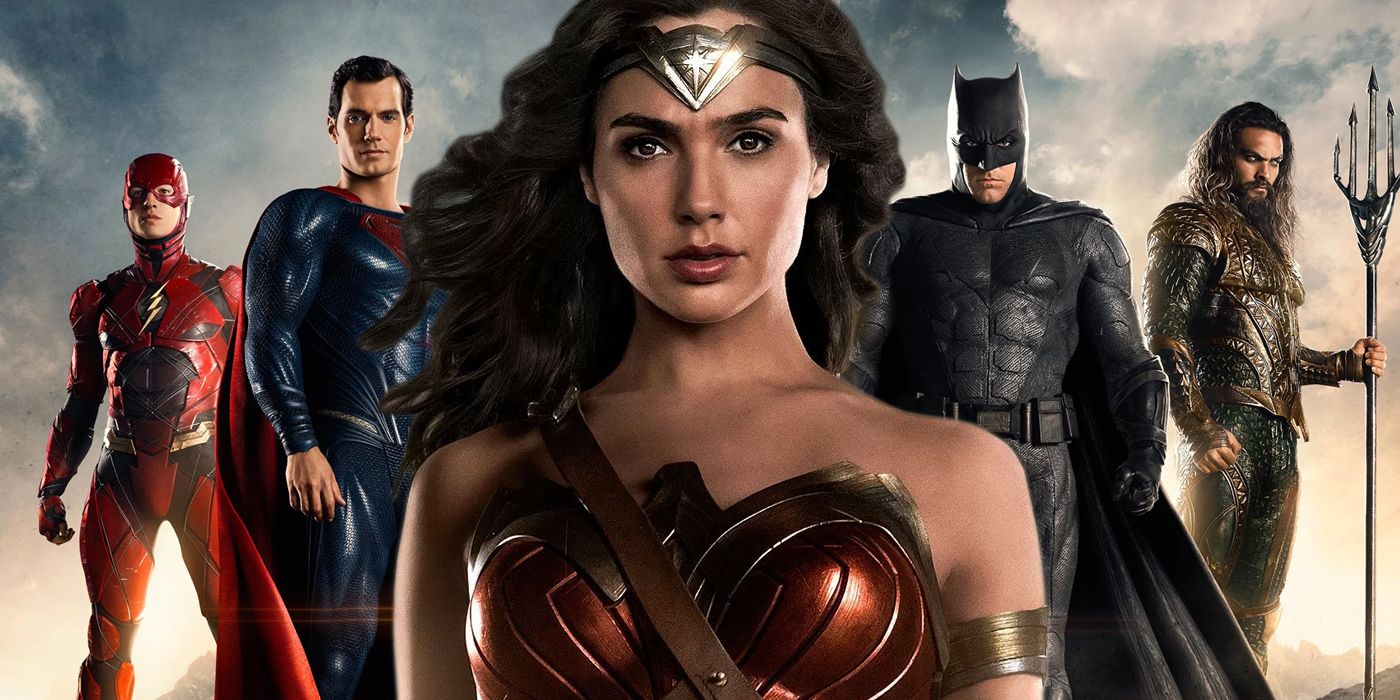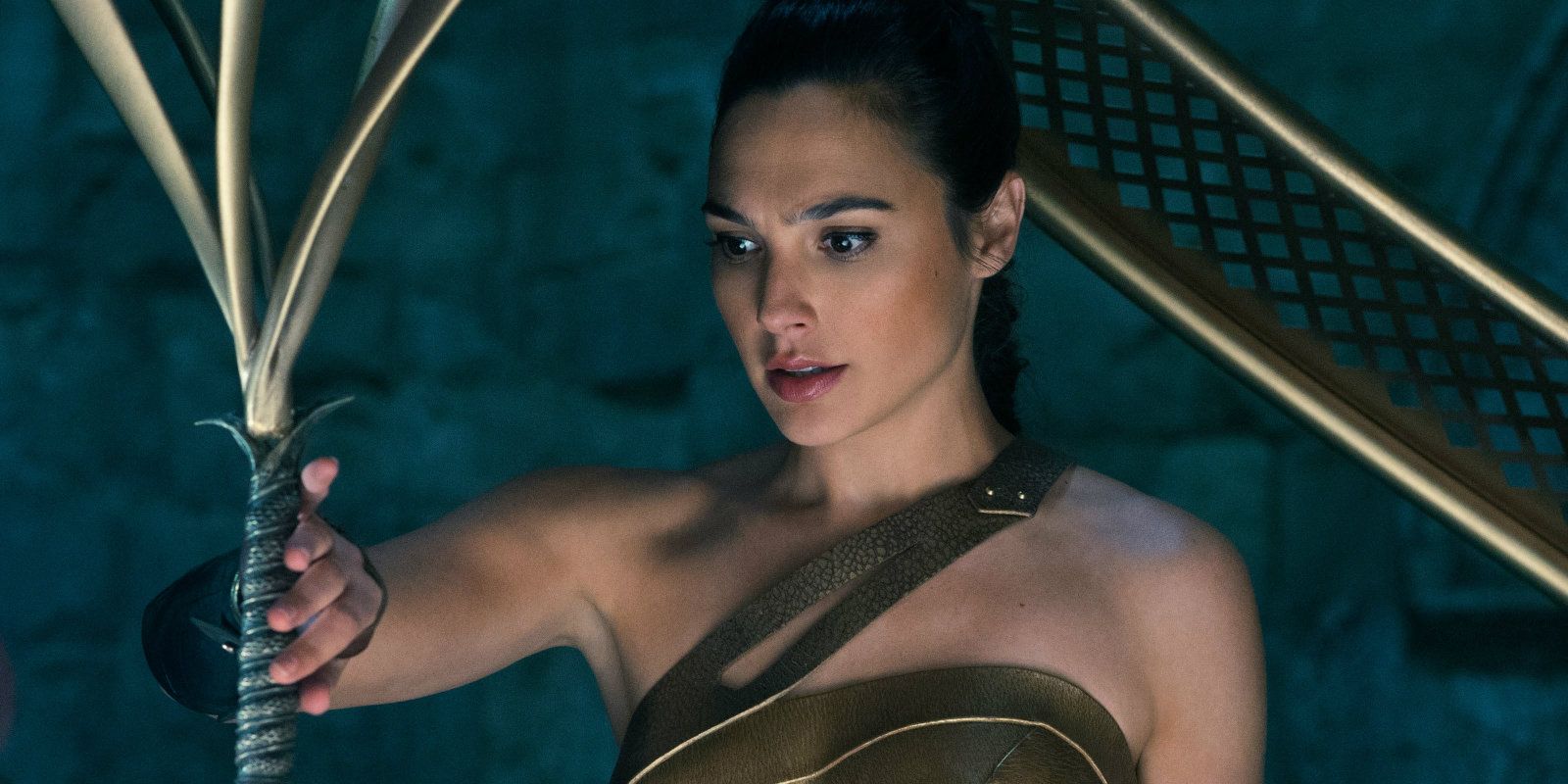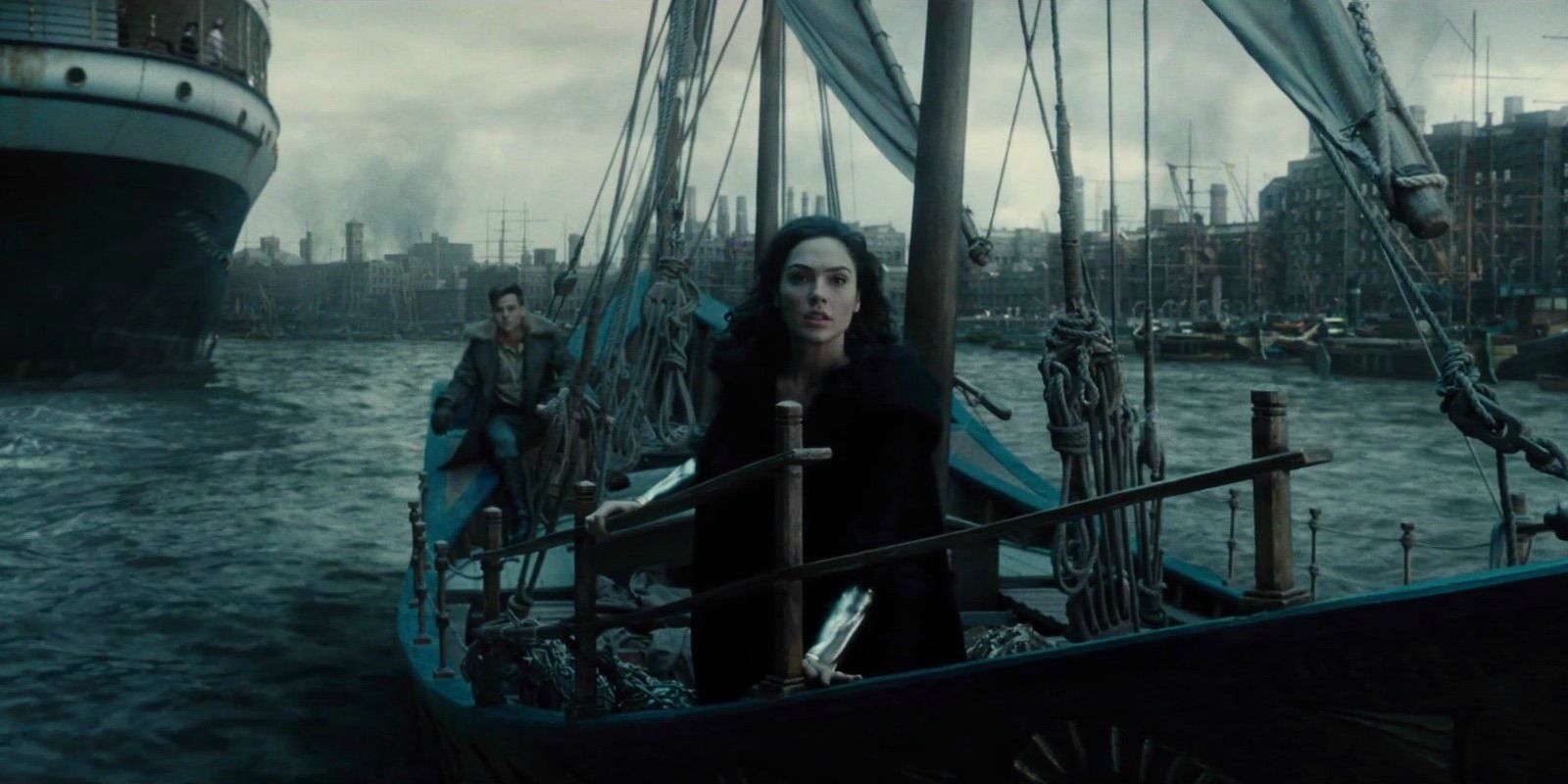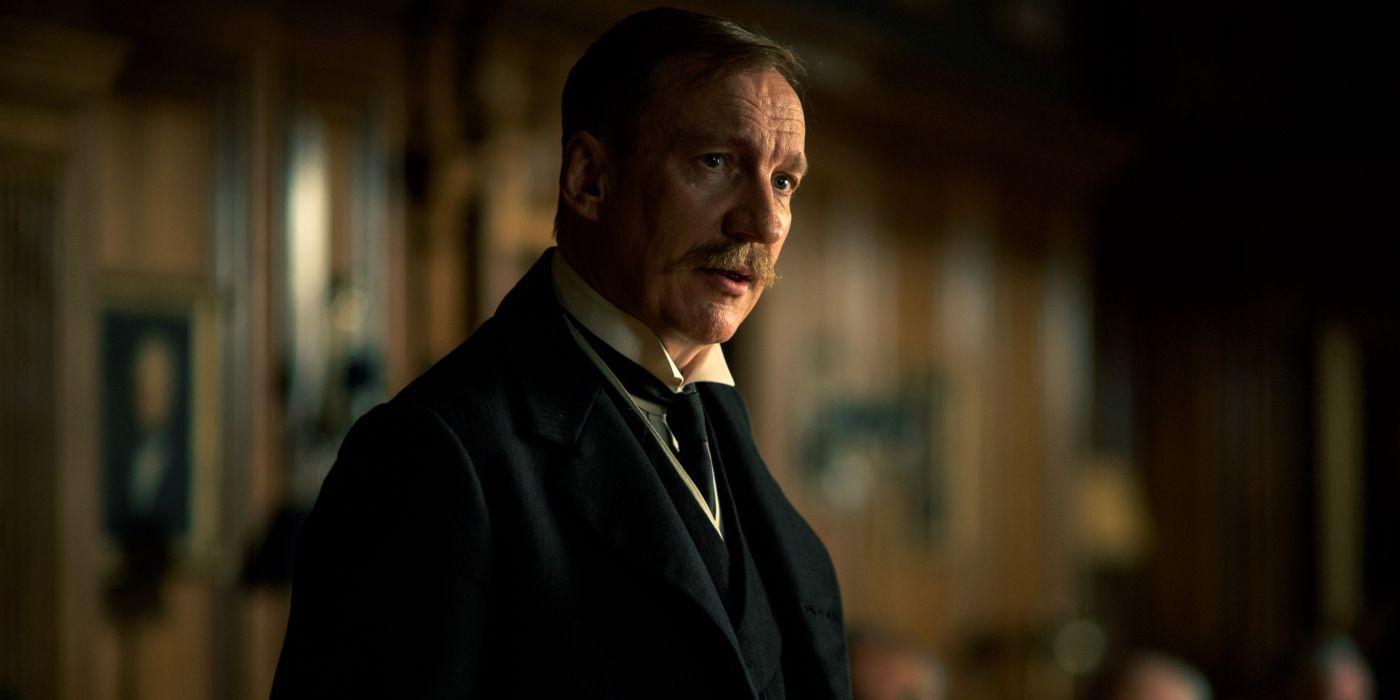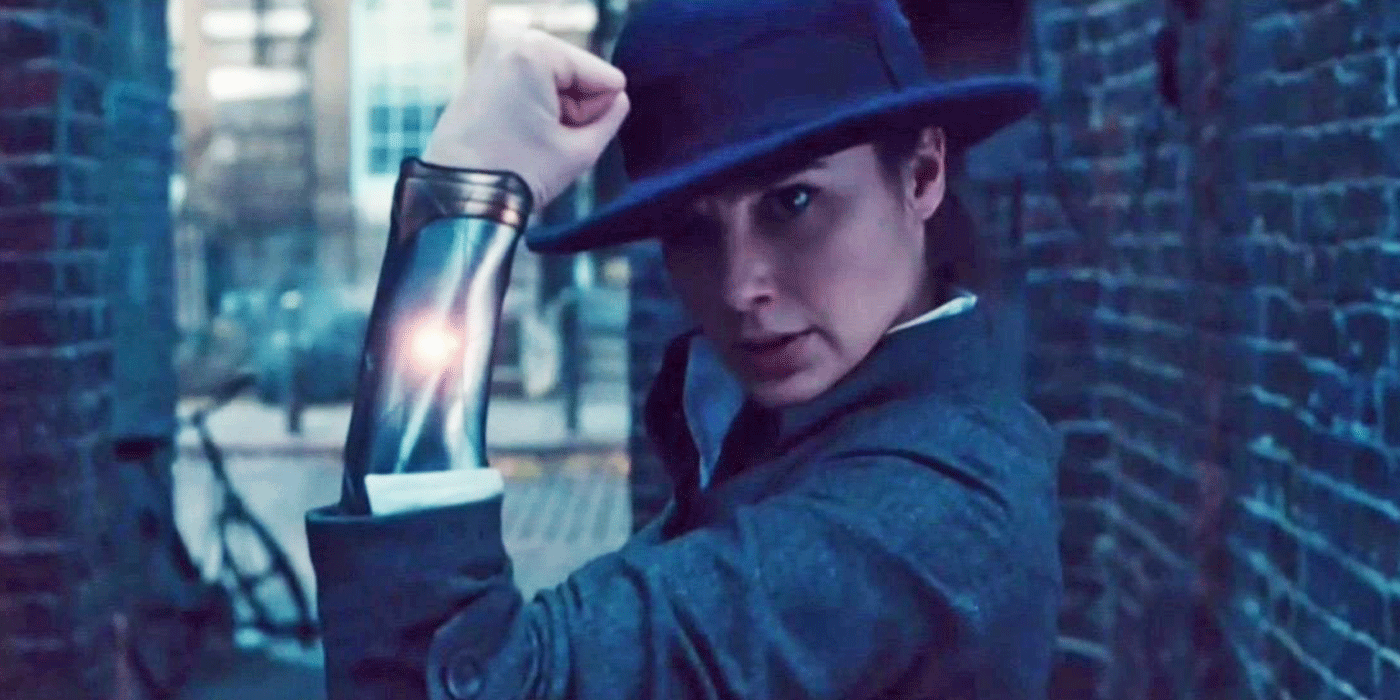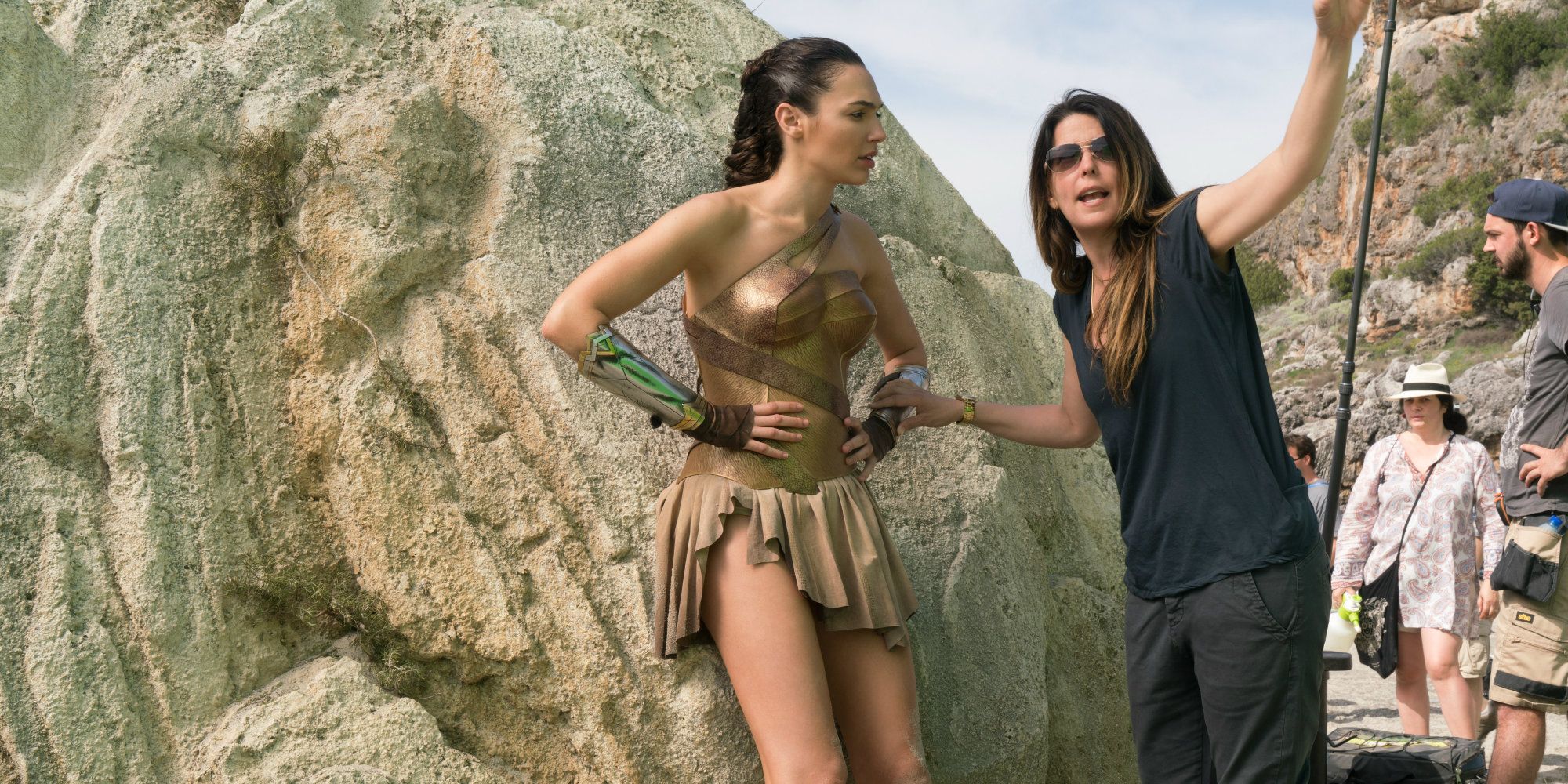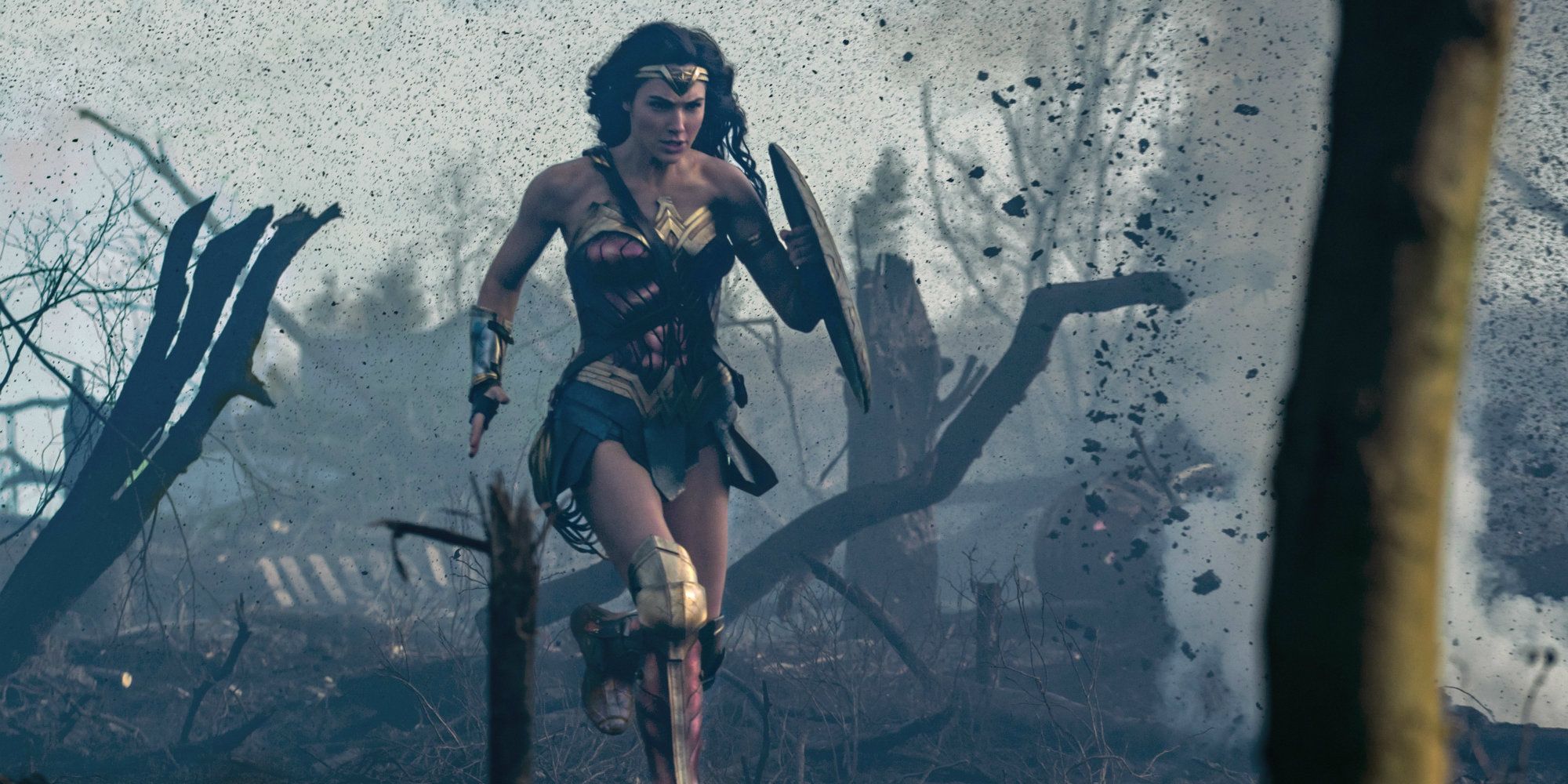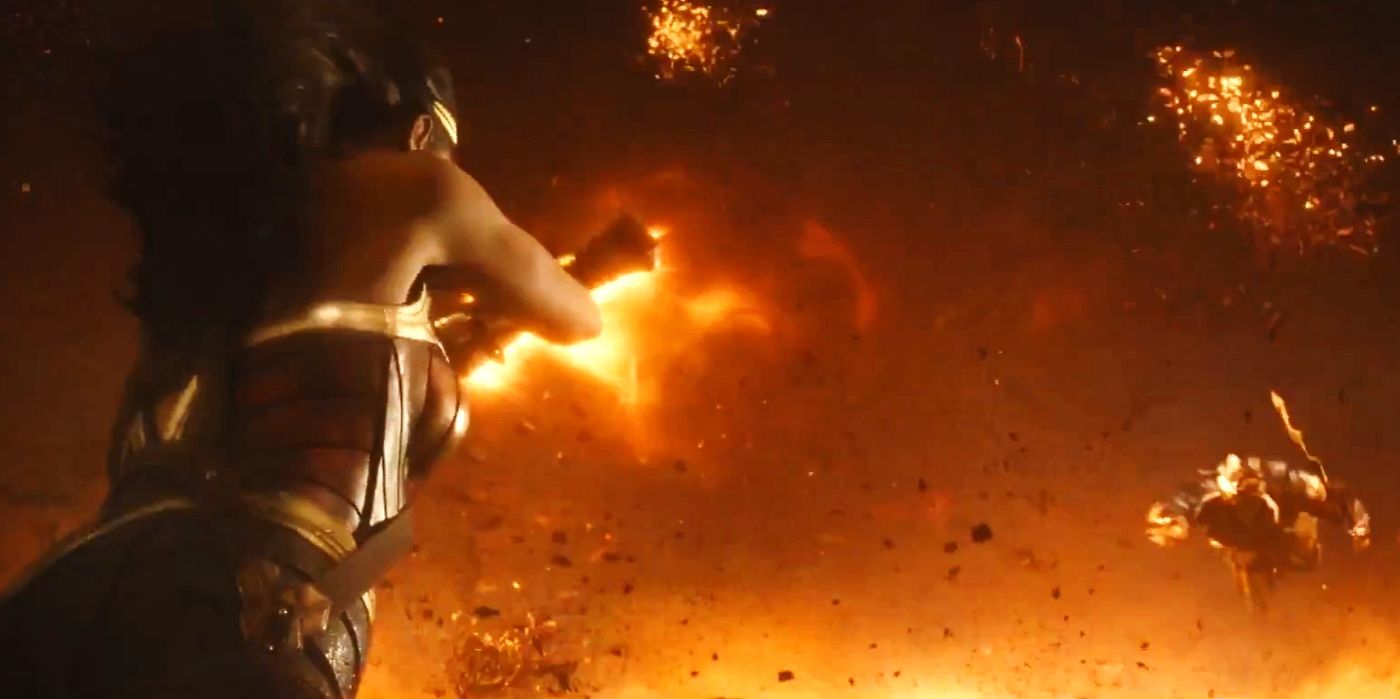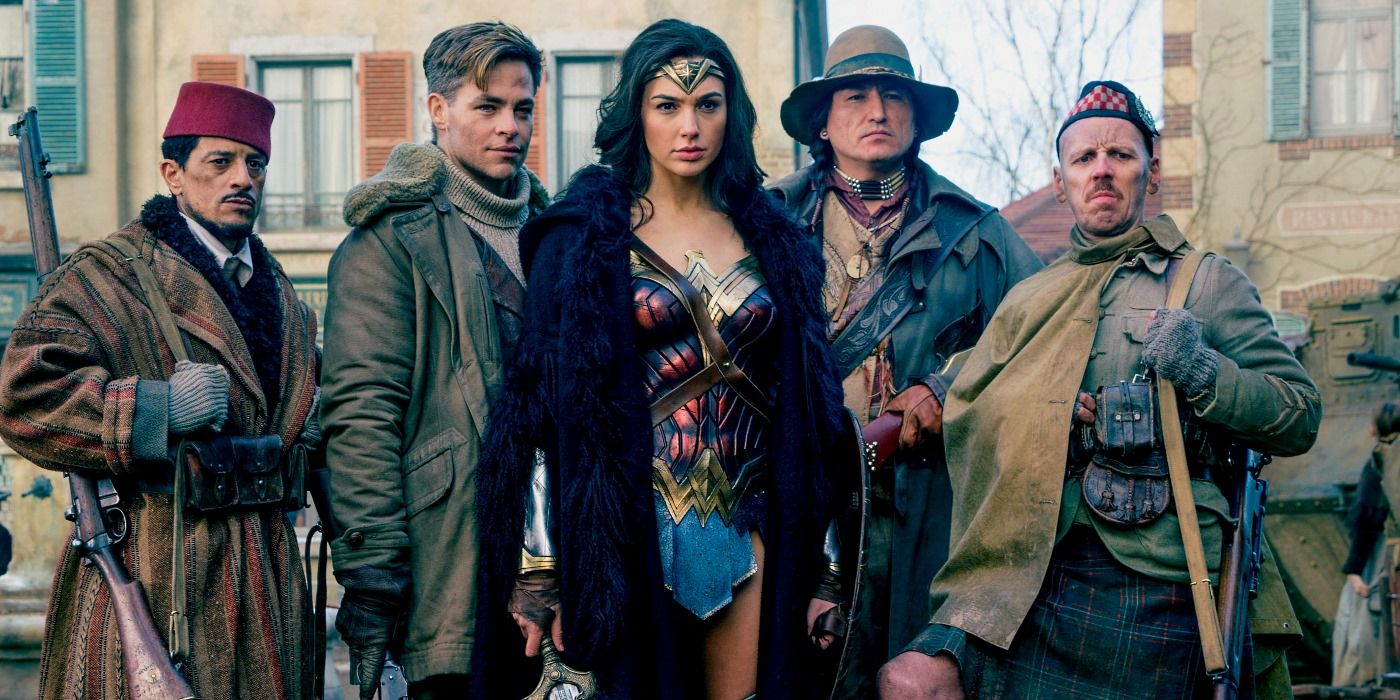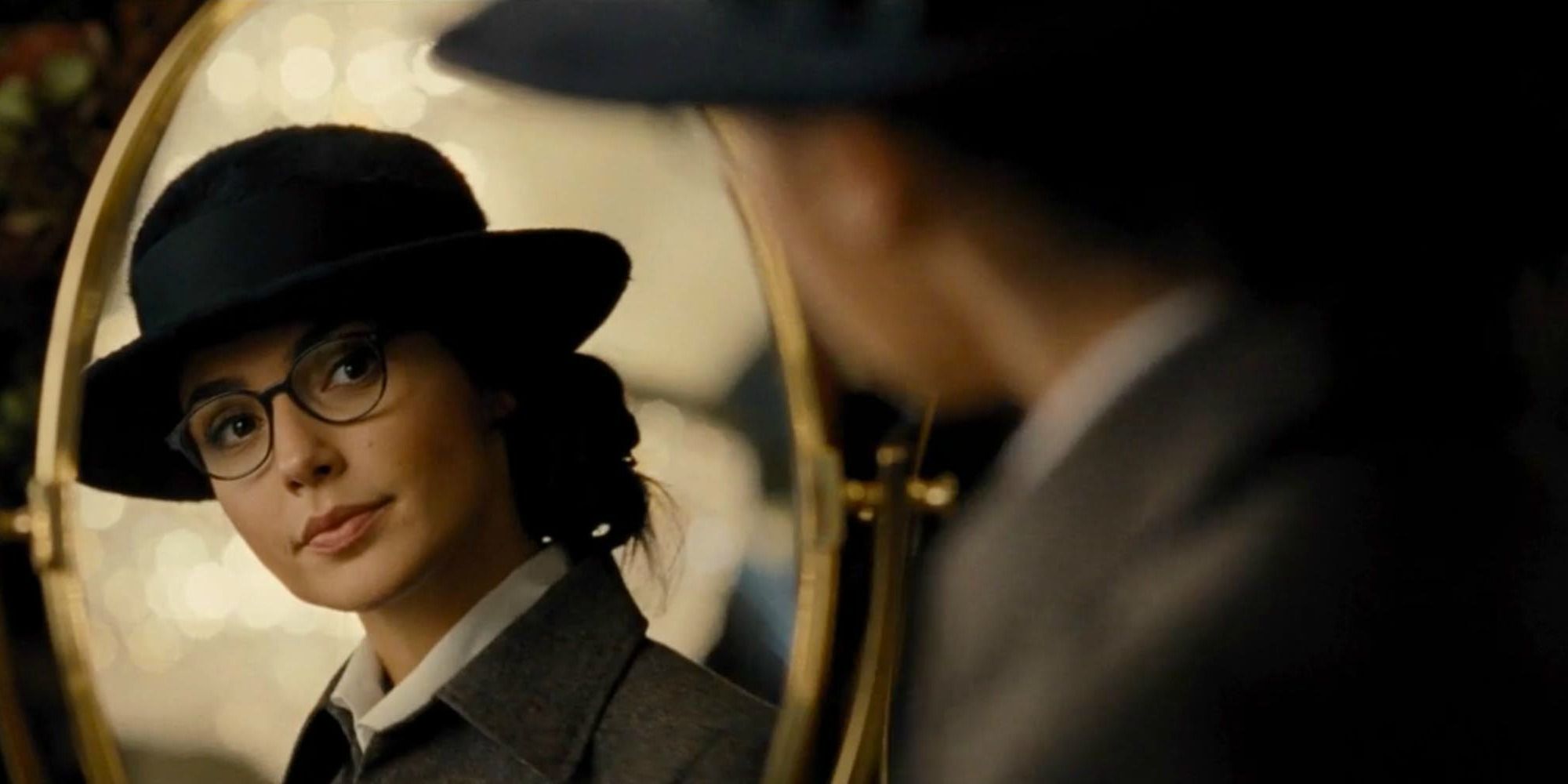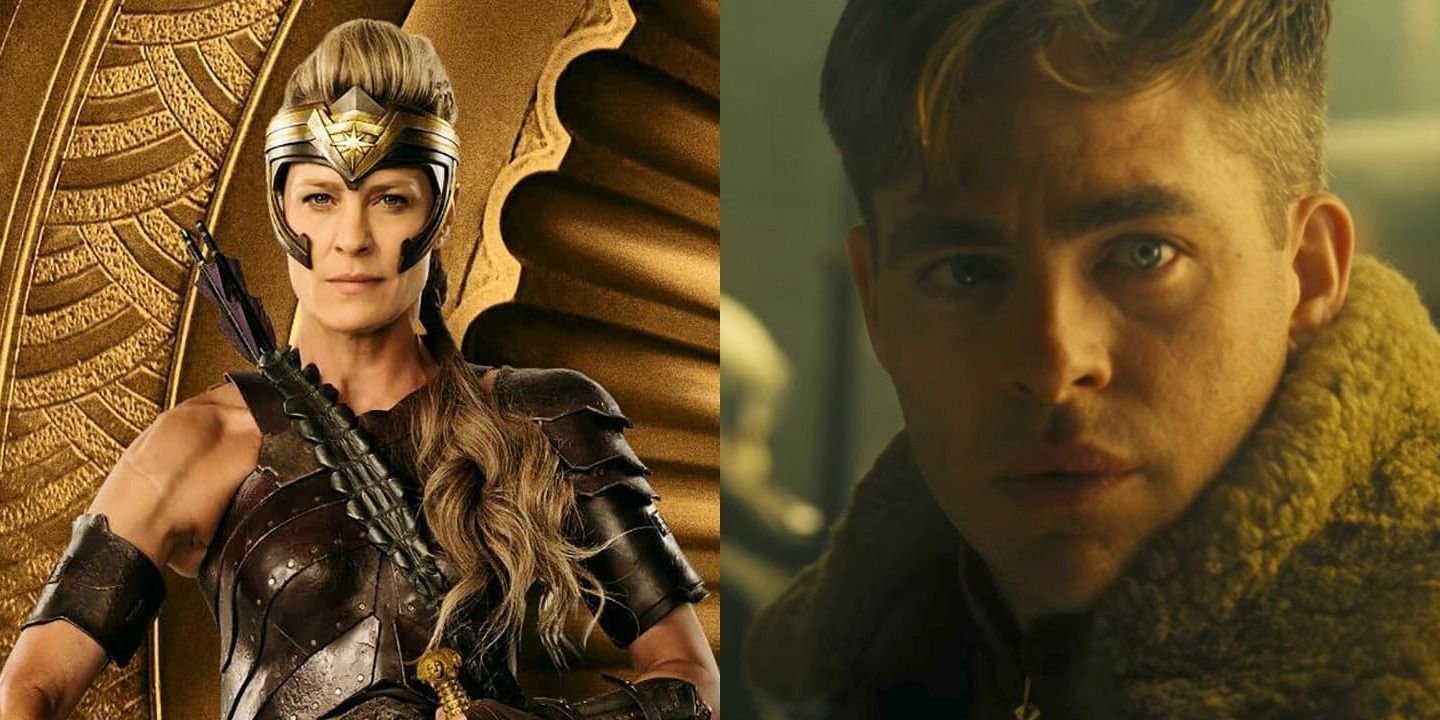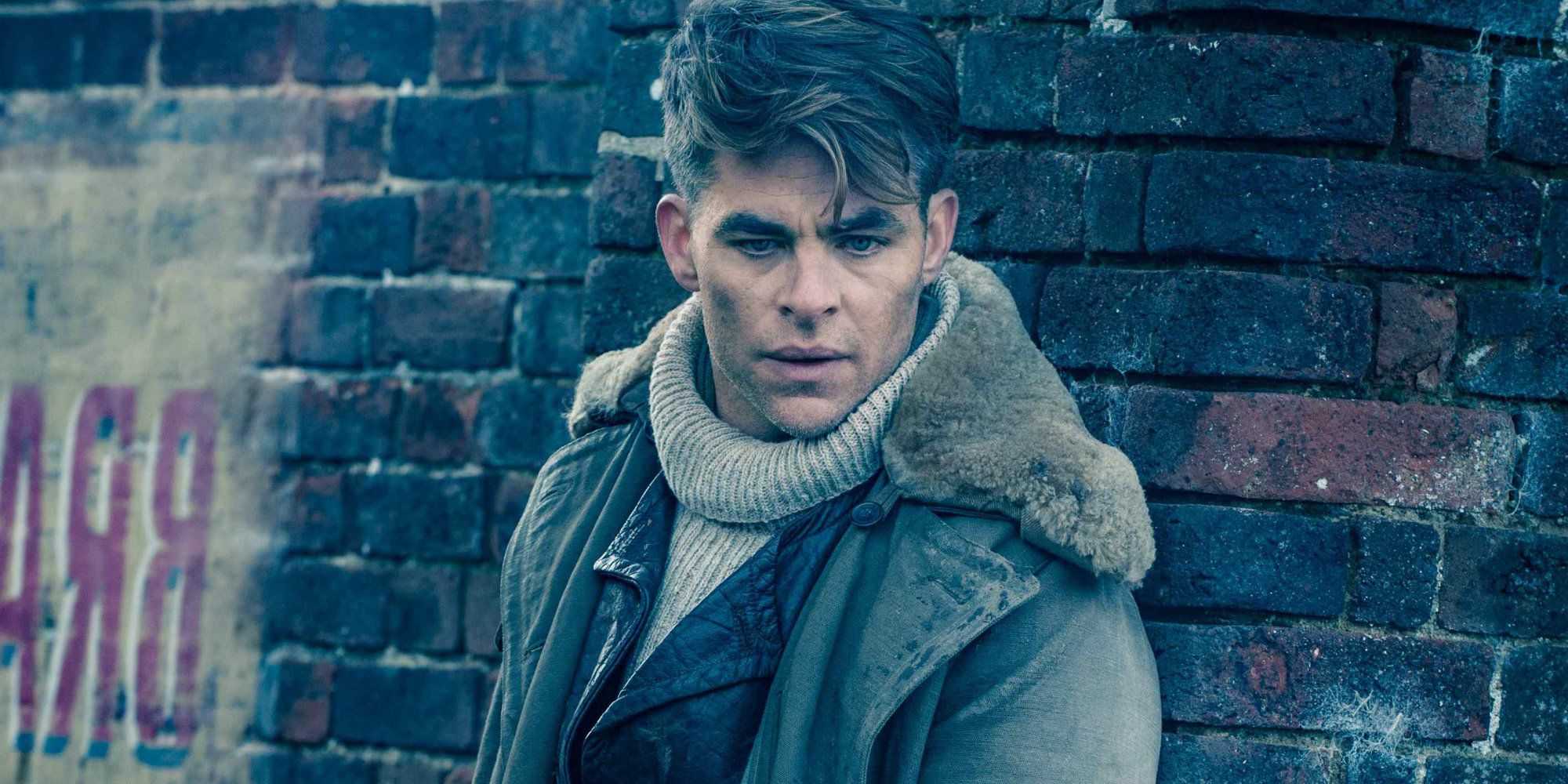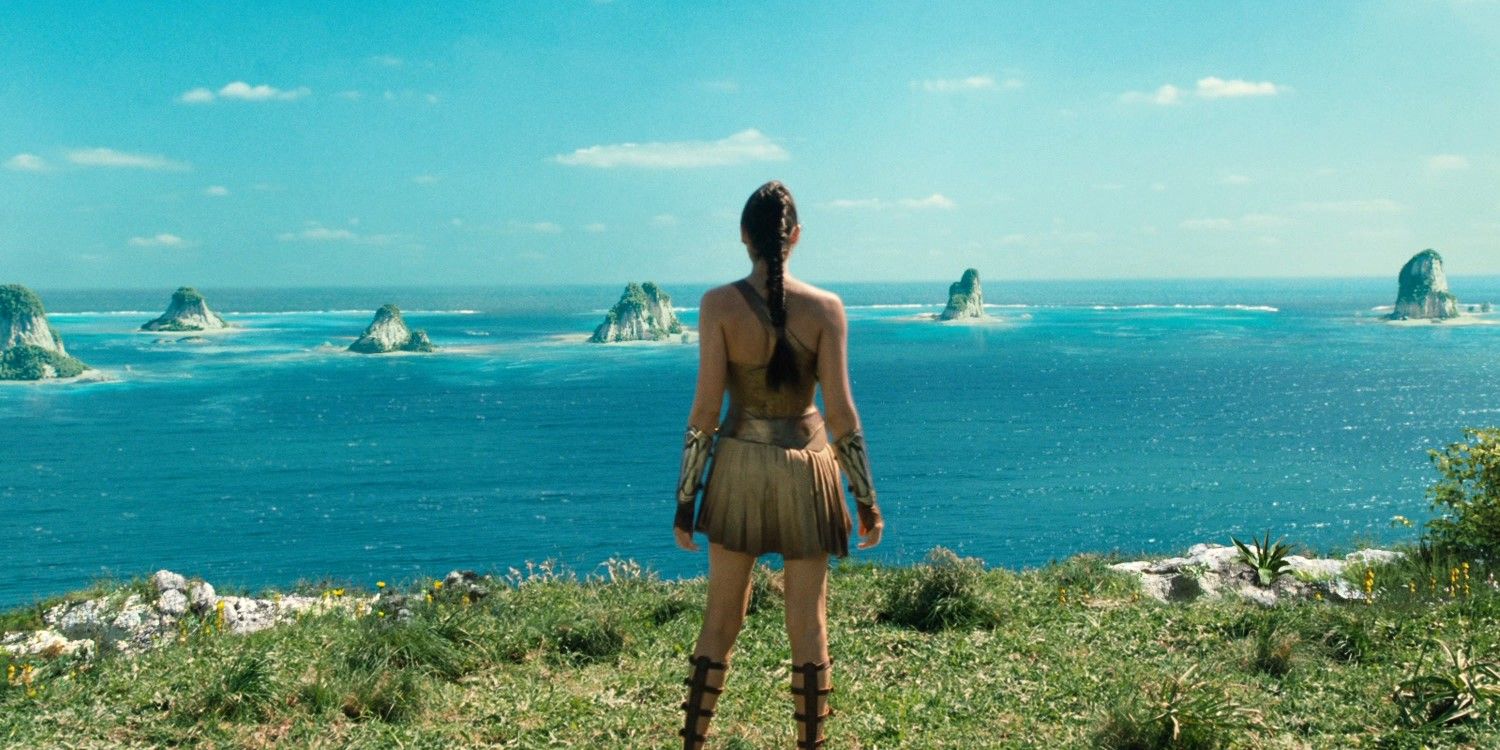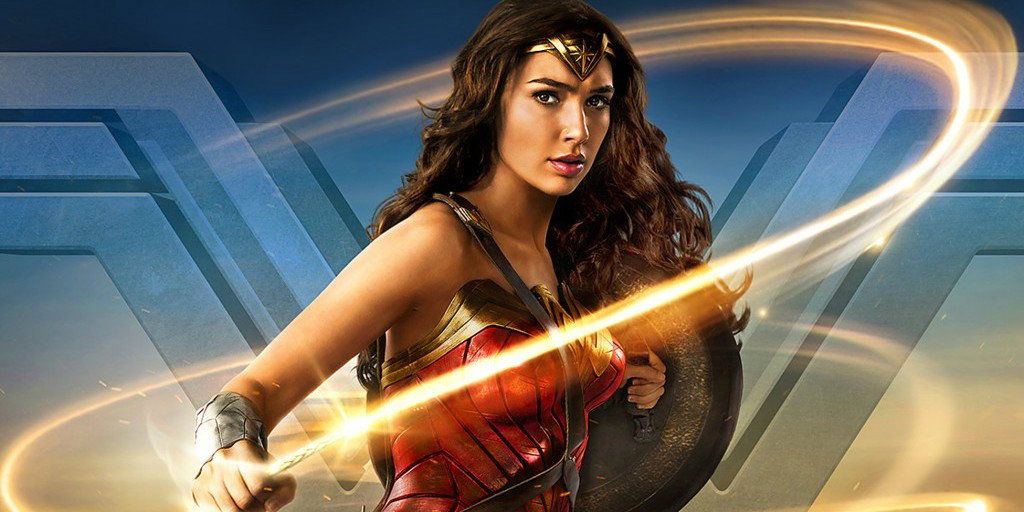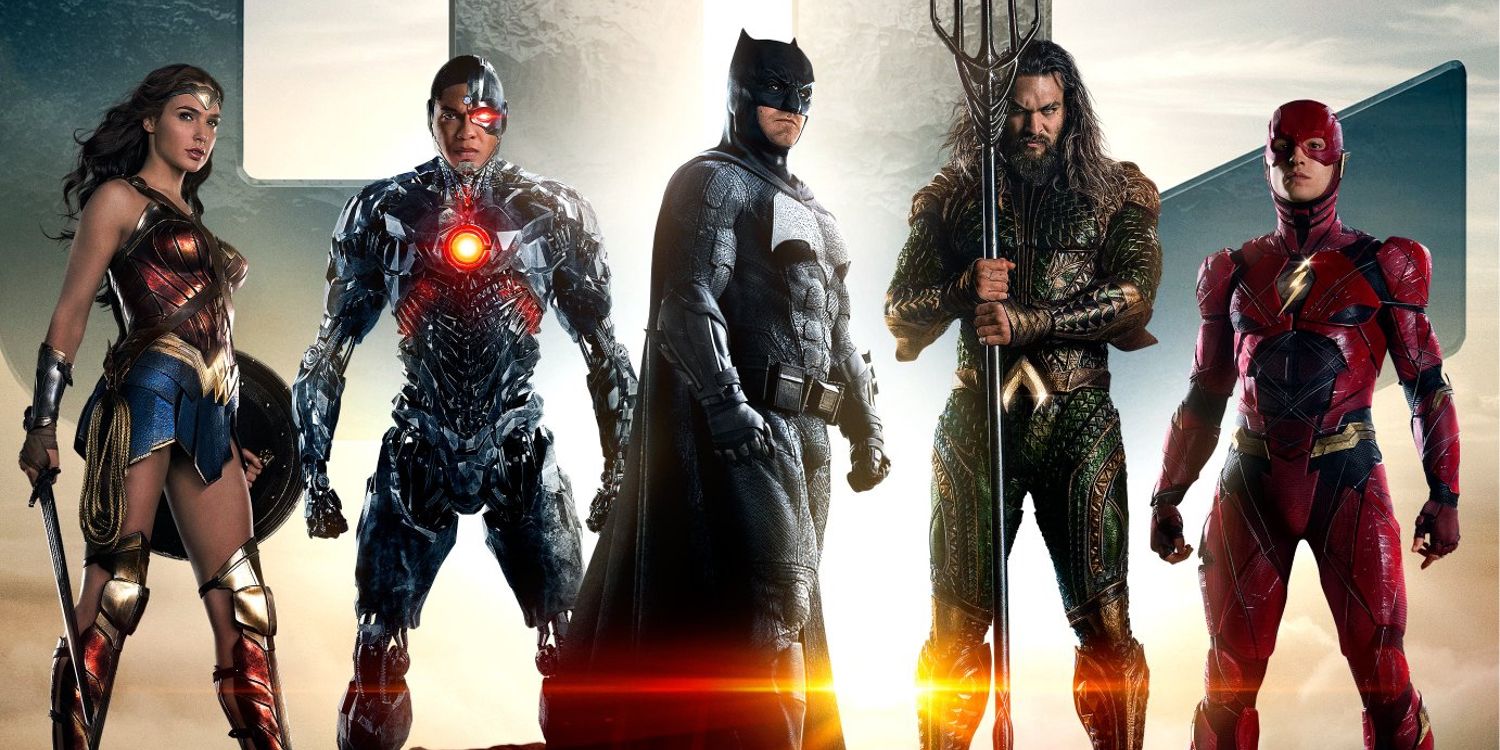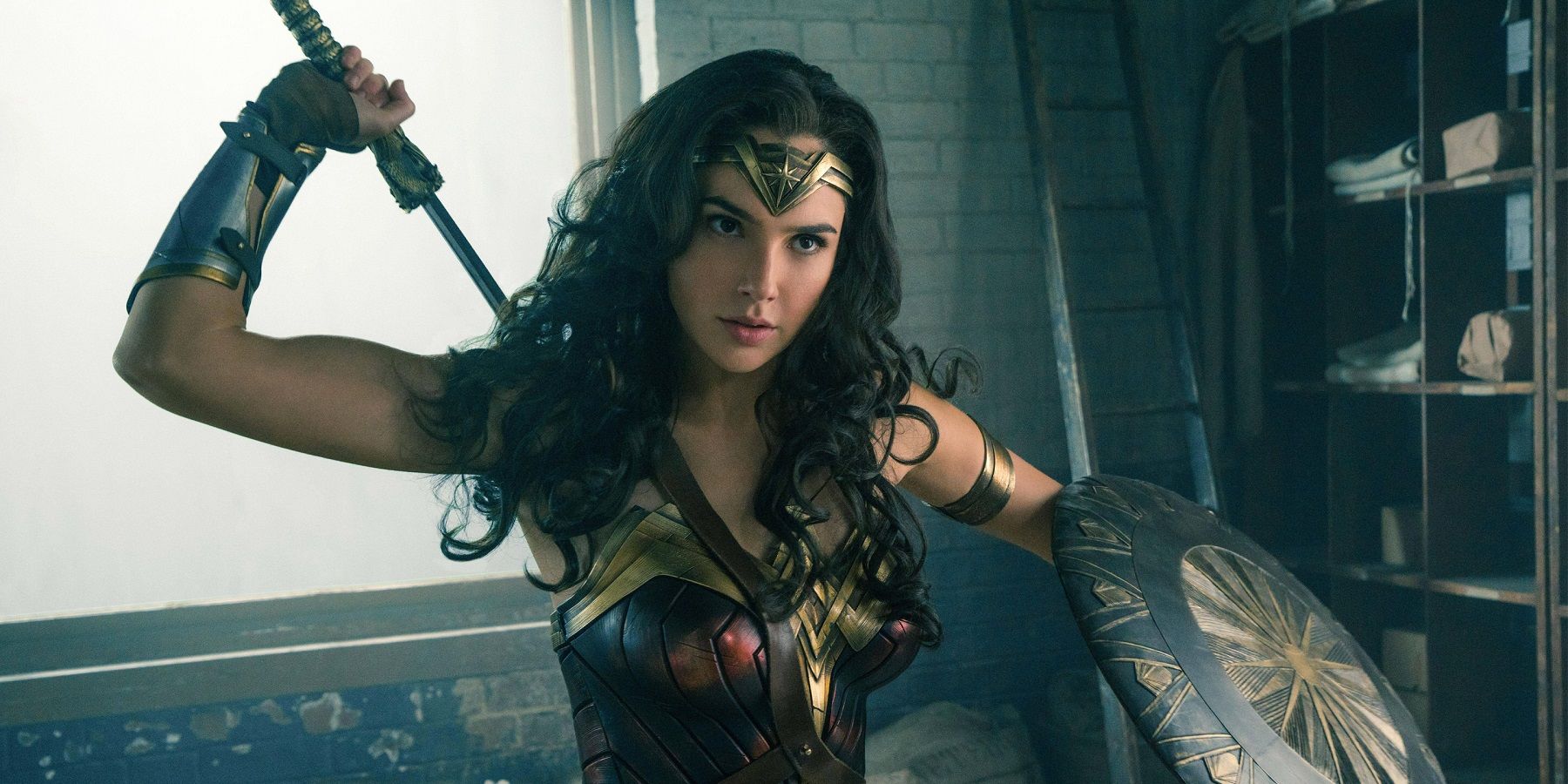When the announcement of Batman v Superman: Dawn of Justice first hit the Internet, the prospect of another superhero cinematic universe that could rival the MCU was met with all-around enthusiasm. Man of Steel's success had officially launched a franchise, and fans were psyched. Two movies later, that enthusiasm turned into a cacophony of fans voicing their concerns for the direction of the franchise. The rocky start to the DCEU may not have lived up the success of the MCU, but with the release of Wonder Woman this past weekend, it appears as though the tide could be changing.
Critics and fans are finally coming together to celebrate what has unmistakably become the best received entry of the DCEU thus far. Apart from finally giving the big screen its first modern female-led superhero movie, there’s many ways in which Wonder Woman works to address and improve the franchise’s issues. Whether you agreed that the DCEU needed saving or not, it's hard to argue that the movies up until this point have created a rift among fans. Now, with their first critically acclaimed entry out of the way, DC has no excuses for turning out another lackluster effort.
Like many of the readers of this list, we’ve seen Wonder Woman multiple times already and feel optimistic about the DCEU moving forward. In hopes of keeping the franchise fresh and innovative, we’ve broken down all the right moves the newest movie makes so that everyone can study it for future reference. So here they are: the 15 Ways Wonder Woman Improves The DCEU.
15. A Return to Origin Stories
As the focus of the MCU begins to shift away from origin stories, the DCEU needs to begin anew, taking the time and patience to develop its characters from the ground floor up. For Bruce Wayne, the departure from the origin story can be forgiven, given that viewers have already witnessed his humble beginnings several times over, but for Wonder Woman’s first theatrical experience, the journey had to be an epic introduction to the Princess of the Amazons.
The origins behind Diana and the rest of the Amazons of Themyscira are deeply rooted in mythos that could only be touched on briefly in a non-origin story. Rather than bypass how Wonder Woman came to be, the film takes the time to explain the creation of mankind by the god Zeus, how men were corrupted by Ares and how the Amazons were made as a purer embodiment of mankind. Like any superhero’s story, Diana's true calling came and she couldn't resist traveling to Earth to help its people. It’s Diana's origins which define her as a character outside of the rest of the Justice League, and which ultimately make her capable of standing out alongside the likes of Batman and Superman.
14. An Historical Drama Mixed with Greek Tragedy
Taking pages from the first Thor film as well as Captain America: The First Avenger, Wonder Woman’s premise feels like an odd amalgamation of the two. Like Thor, Diana Prince’s origins are borrowed from mythology. As the Goddess of Truth, writer Allan Heinberg chose to humanize Diana by featuring her growth in Themyscira. From the development of a young child to an inexperienced adult, it isn’t until traveling to Earth that the heroine is effectively depicted as a savior among humans.
Director Patty Jenkins has gone on record saying the change in Wonder Woman’s timeline in the film from World War II to World War I had to do with the significance of the time. As the first automated war, World War I brought the invention of the machine gun, making for a devastating moment in world history where people killed without even seeing their enemy. When Diana arrives, she learns that some battles are out of reach of even the most capable heroes. It’s a humiliating realization that carries weight, as it’s the first moment when her training cannot help her. In the end, it's the cross between her real-world setting and her God-like status that makes her more palpable to audiences, making her a hero everyone can root for.
13. A Worthy Villain
Much like the MCU, the DCEU appeared to have a villain problem following the franchise’s last two outings. Although Zod would prove to be a formidable adversary to Henry Cavill’s Superman thanks in part to the virtuoso performance of Michael Shannon, Jesse Eisenberg’s take on the sinister billionaire Lex Luthor felt like a psychotic, even less likable version of his take on Mark Zuckerberg from The Social Network. Somewhere between the ridiculously overpowered Enchantress in Suicide Squad and the unconvincing Luthor in Dawn of Justice, a balance had to be met. Luckily, Wonder Woman makes the first steps in the right direction.
If you’ve watched the movie, then you know that the gas-sucking Erich Ludendorff and his hideously disfigured assistant Doctor Poison aren't the true antagonists of Wonder Woman. From the beginning, Diana speaks of her purpose to destroy Ares, the God of War. Posing as a seemingly ineffective British politician named Sir Patrick Morgan, Ares hides in plain sight before his big reveal. Comparatively, he proves to be the opposite of Diana, shadowing her optimism with his own cunning deceit and testing her fortitude during their final epic match-up, showing that sometimes, the best bad guys are the ones lurking in the background.
12. It Takes Risks
Perhaps no superhero movie in existence had ever had more riding on its success than Wonder Woman. Coming off the disparaging reviews of the three DCEU films before it, Diana Prince needed to relaunch the franchise by establishing a tone while still pushing the envelope. It did that by revisiting the source material and updating it to fit pressing topics about feminism and morality, making changes along the way to bring the heroine into the 21st century.
One such change that fans will be quick to point out is Diana’s birth. Originally, the princess of Themyscira was sculpted from clay by her mother Hippolyta and brought to life by Zeus. Although her birth story is referenced in the film, viewers later find that Zeus is her birth father, making her original birth story a myth and giving her a more palatable origin for viewers.
Another change viewers may be aware of is Diana’s secretive departure from her homeworld, which is sparked by Steve Trevor’s arrival to Themyscira in the film. In the comics, Diana competes in a tournament to see which warrior would leave Paradise Island, ultimately winning the right to depart for Earth.
Ultimately, the many changes to the character’s origins help to modernize Diana, making her a heroine capable of forging her own path.
11. A New Filmmaking Approach
Prior to the premiere of Wonder Woman, audiences were hard-pressed to find another female role model in big blockbuster superhero flicks. More often than not, those movies which did star women in leading roles sadly catered to male-desired notions of sexuality, objectifying its characters. For a proper adaptation of DC’s biggest heroine to work, a capable mind was needed. Luckily, director Patty Jenkins admitted she wanted to direct the movie for years and believed Gadot was the perfect actress for the part, making it a match for the ages.
Even with all the pieces in place, an all-female crew doesn’t automatically make a good female-starring movie, of course. Where Wonder Woman triumphs is in its unwillingness to submit to the trope of the “strong female” character. Gadot’s version of Diana shows her weaknesses. At times, she’s naive or overtly emotional and may exhibit a childlike optimism about the world, but she learns from her mistakes. At the same time, she doesn't play second fiddle to her male co-stars, including Steve Trevor. Sure, Wonder Woman is a strong female character, but she’s admittedly feminist for letting her flaws be known, making her movie the most accessible superhero film for female audiences to date.
10. A Global Icon
With news that Wonder Woman has now lassoed in $223 million globally, Diana Prince has not only taken the world by storm, but she’s transformed a traditionally all-American icon into a renowned universal character. Created in the midst of World War II by American psychologist William Moulton Marston, Diana was first depicted in red, white, and blue storming headfirst into battle. The DCEU’s modern day adaptation not only sheds Gadot of the patriotic apparel, but it hardly mentions the United States in its two hour, twenty-one minute runtime.
Although there's still something to be said about the diversity of the cast, the London setting is a departure from the downtrodden version of America depicted in the DCEU thus far. While it could be argued that Diana isn't strictly non-American (there's one scene where she poses as Rosie the Riveter after deflecting a bullet with her bracelet), it helps that Gadot’s accent is undeniably foreign. Her version of Wonder Woman echoes sentiments of love, peace, and justice for all humankind, and it never settles on one part of the world to protect, giving this heroine reach that the rest of the Justice League have yet to show on screen.
9. Better Use of CGI
One issue critics have harangued Zack Snyder for in his first two films of the DCEU is his dependency on CGI. Rather than using effects as an instrument of plot progress, the other films of the DCEU put the action front and center. That's fine for someone looking for a popcorn action flick, but the DCEU needs to establish an emotional core with its characters, and that can be hard to do when Superman’s biggest on-screen moments include him being thrown through buildings by a heavily armored Batman.
Due to Wonder Woman’s pacing, we’re given time to connect to the character before delving into her motivations. The action scenes also give her a chance to show off her training as she deflects bullets and whips around her incredibly badass Lasso of Truth. The strong emphasis on choreography allows Gadot to learn the moves only the way Diana can, and she’s not the only with a chance to shine. Steve Trevor also has a courageous airplane escape reminiscent of Indiana Jones that uses a strong score to create a sense of escapism. The heaviest CGI scene doesn't come until the film's epic conclusion, and by then. the audience is completely in Diana’s corner, eager for her to show what she's made of.
8. A Well-Rounded Supporting Cast
It's easy to see how supporting roles can go unnoticed in blockbuster franchises. Oftentimes, bigger name stars are reduced to cameo-sized parts or wasted on pointless subplots, but that's not the case with Wonder Woman. Starting in Themyscira, each character is well fleshed out. Hippolyta’s maternal role to Diana nurtures her into the proactive and open-hearted fighter she later becomes and Robin Wright steals the spotlight as Antiope, delivering a tear-inducing sacrifice early in the first half. (Don't worry, gang, we'll see her again soon!)
Once on Earth, the cast continues its upward trend. Etta Candy is a delight during Diana’s wardrobe-changing scene, bringing fits of laughter without becoming overbearing. Steve Trevor also brings recruits of his own to help Wonder Woman’s cause. Sameer is memorable as the woman-seducing master of disguise, while the character of Chief is a wise addition to the group who has already experienced what war can do to people, but it’s the hard-drinking Irishman Charlie who steals hearts as the PTSD-plagued sniper who's lost his ability to shoot. Together, the cast make for an integral part of Diana's past, sculpting her into the modern day version of the hero audiences will see in Justice League.
7. A Lighter Tone
Take a moment to reflect on the first three films of the DCEU. Do you recall Superman cracking a smile? Does Batman ever show signs of optimism when he isn't paranoid about aliens attacking Earth? Until Wonder Woman, David Ayer’s Suicide Squad was arguably the lightest film in the entire franchise (however impossible that sounds). Although it's refreshing to see villains having fun on screen, the DCEU can't rely on them to counteract all of Batman’s soul-crushing cynicism. Luckily, Diana doesn't spend any time moping around. From the start, the inspirational tone draws a line between Wonder Woman and the rest of the DCEU, delivering a comedic element to an often dark story.
Exploring themes of war, Patty Jenkins’ film is an exploration of moral ambiguity. From the start, Jenkins questions the genesis of war, decidedly making it unclear who the bad guys of World War I truly are. As Steve Trevor says at one point in the film, perhaps humans are inherently bad, but that doesn't mean they're not worth saving. Rather than throwing in the towel, Diana continues to fight for a better tomorrow. By the end, she sheds light onto an Earth showered in helplessness, delivering a smile and a few moments of laughter along the way -- things the DCEU had been sorely lacking.
6. Meaningful Deaths
Although viewers will be talking about the endearing story of Diana Prince, there’s no doubt that the most emotionally resonating moment of Wonder Woman was Steve Trevor’s sacrifice. As he notes before jumping on an airplane filled with poisonous bombs, he must save the day, but Wonder Woman must save the world. It’s a moment that some may have predicted given how little Trevor is referenced in Batman v Superman, but it was jaw-dropping nonetheless, and the DCEU’s only significant death so far.
Antiope's death early on in the film, meanwhile, helped set the stakes for the film right from the get go. Watching the somehow-a-fan-favorite-in-five-minutes-of-screentime get blown away so early on made sure that in every scene that followed, all bets are off.
When it comes to killing off characters, the DCEU doesn't shy away from controversy, but unfortunately, many of the death scenes so far have felt unnecessary. By now, fans know that Superman died at the end of Dawn of Justice, but given his significance to the DCEU, few believe he's actually dead. (Because he obviously isn't.) Similarly, Jonathan Kent’s death in Man of Steel was unwarranted. Rather than revealing his powers to the world -- or just, like, moving really fast -- Supes lets his father be swallowed by a tornado, only to reveal his powers later on anyway. Ultimately, Trevor’s heroics set a new standard moving forward. Here’s hoping the DCEU continues to make smart decisions before killing someone off for the sake of doing it.
5. Chris Pine
Acting as the love interest for the first major on-screen female superhero may not sound like a dream role for an actor, but Chris Pine does it with class and machismo, taking a backseat to Gadot’s Wonder Woman without giving away the spotlight entirely. After crash landing his WWI plane into the waters of Themyscira, Air Force officer Steve Trevor could have easily been treated like an non-entity as Diana wowed audiences with her skills, but instead, the character manages to share a few highly memorable moments with the heroine.
Although making Trevor a compelling supporting character is an accomplishment by itself, the biggest achievement of Pine’s performance is his ability to still serve his job as the human man capable of sweeping an Amazon off her feet. He does so by humbling her without objectifying her. His endearing talks about saving a world from war even if everyone doesn't ask to be saved are teachable moments for Diana, as are the more tender moments they share sporadically throughout the picture. Although Pine will be remembered as the supporting love interest, his onscreen chemistry with Gadot and memorable performance overall are things that the DCEU will hope to recreate in future adaptations.
4. Themyscira
Inextricably linked to every superhero is their home of origin, a defining landscape that mirrors the idiosyncrasies of the character. For Batman, Gotham’s dark alleyways and criminal rites of passage are as dreary as his despairing outlook on life. With Superman, his homeworld of Krypton is a haunting symbol of his past as the only surviving Kryptonian to escape its destruction. Similarly, Wonder Woman’s ties to Themyscira are highlighted in her story, and much like her warm-hearted personality, there’s a nurturing aura to the island that isn’t felt anywhere else in the DCEU.
Like the heroes of the MCU, the characters of the DCEU are distinctly antithetical in their personalities. It stands to reason that their contrasting character traits would align with their own unique origins, adding to the world-building of the universe. Coming from a womanly domain of lush greenery and cascading waterfalls, Themyscira is a utopia blind to the tragedies of the real world. It’s a fitting starting point for Wonder Woman’s journey, and it opens the doorway to other exploratory worlds outside of Earth. It’s a welcome introduction in the expanded universe, as viewers are sure to see other distant locations in the very near future. We can only hope that Atlantis is half as awesome.
3. The Weapons
What's a comic book character without their weapons? Until now, the DCEU’s armory has been seriously behind the otherworldy powers seen in the MCU. Sure, Batman’s Batmobile has had awesome moments, and there’s something disturbingly entertaining about Harley Quinn’s bat-wielding antics, but where’s the godly might of Mjolnir or the gravity-defying maneuverability of Captain America’s shield? The DCEU needs their equivalent of those items. Now, they have it.
More than just the equivalent of a truth-telling serum to mortals, the Lasso of Truth is Wonder Woman’s signature weapon. Like Indiana Jones and his bullwhip, she’s quick to wrangle her enemies under its golden hue, but the lasso isn’t the only item that stands out. In one particular scene, Diana walks across a barren battlefield to help a trench full of soldiers. As she makes her way through the No Man’s Land, she deflects an onslaught of bullets with the Bracelets of Submission, giving the soldiers an opportunity to approach the Germans’ front line. Not only is the moment crucial to the development of Wonder Woman as a life-risking hero, but it showcases her abilities as she is able to go unscathed with the simple movement of her wrists. Her incredibly strong shield certainly didn't hurt, either.
2. No Justice League
After finishing the latest entry in the DCEU, many viewers will be surprised to find that no scene played during the credits. Although the omission makes sense, given the historical timeline of the film and the present timeline for the rest of the DCEU, it's admittedly a disappointment for fans hoping for a sneak preview of Justice League. Still, it's also a smart move on the part of Patty Jenkins and the rest of DC.
With the exception of the opening scene in which Diana receives a package from Bruce Wayne, sparking the flashback that makes up the movie’s narrative, there aren’t many Easter eggs scattered throughout the movie. Although short cameos and hidden details can give audiences fun hints at future storylines, they can also be a distraction. For a hero who is only now getting the origin story she deserves, Wonder Woman's movie needs to be about her. Any additional heroes would just overload the narrative. The upside is that Wonder Woman works as a standalone movie, making it an experience that can be shared without seeing the other films of the DCEU. That's great news for anyone disappointed by the work of Zack Snyder and David Ayer so far.
1. Gal Gadot
When the Israeli-born Gal Gadot stepped onto the screen in last year’s Batman v Superman: Dawn of Justice, many were quick to call her the best live-action adaptation of the heroine, rivaling her predecessor Lynda Carter. But while Gadot was alluring in civilian clothes and looked pretty badass standing alongside the other two members of DC's Trinity, the word was still out on whether she could carry a solo film. Now, the answer is indisputable. Gadot’s Wonder Woman is a return to the classic comic book icon reminiscent of Christopher Reeve’s days as Superman, and signals the beginning of a new age for female superheroes.
Gadot has gone on record in the past saying she didn't want to bring the damsel in distress Hollywood trope to her role as Wonder Woman, and from her first appearance as a little girl in Themyscira, Diana defies the stereotype. Her interests in feminine things are few and far between, yet Gadot doesn't sacrifice femininity. Instead, she embodies it with a generous smile and an imposing stance, making her a fierce imagining of the heroine that’s simultaneously captivating. In a cinematic universe criticized for being relentlessly bleak, Gadot unabashedly represents the moral do-gooder, bringing viewers a new look at truth and justice done right. We can only hope the next few DCEU entries will follow her lead.
--
How else will Wonder Woman's impact be felt across the DCEU? Let us know in the comments.

